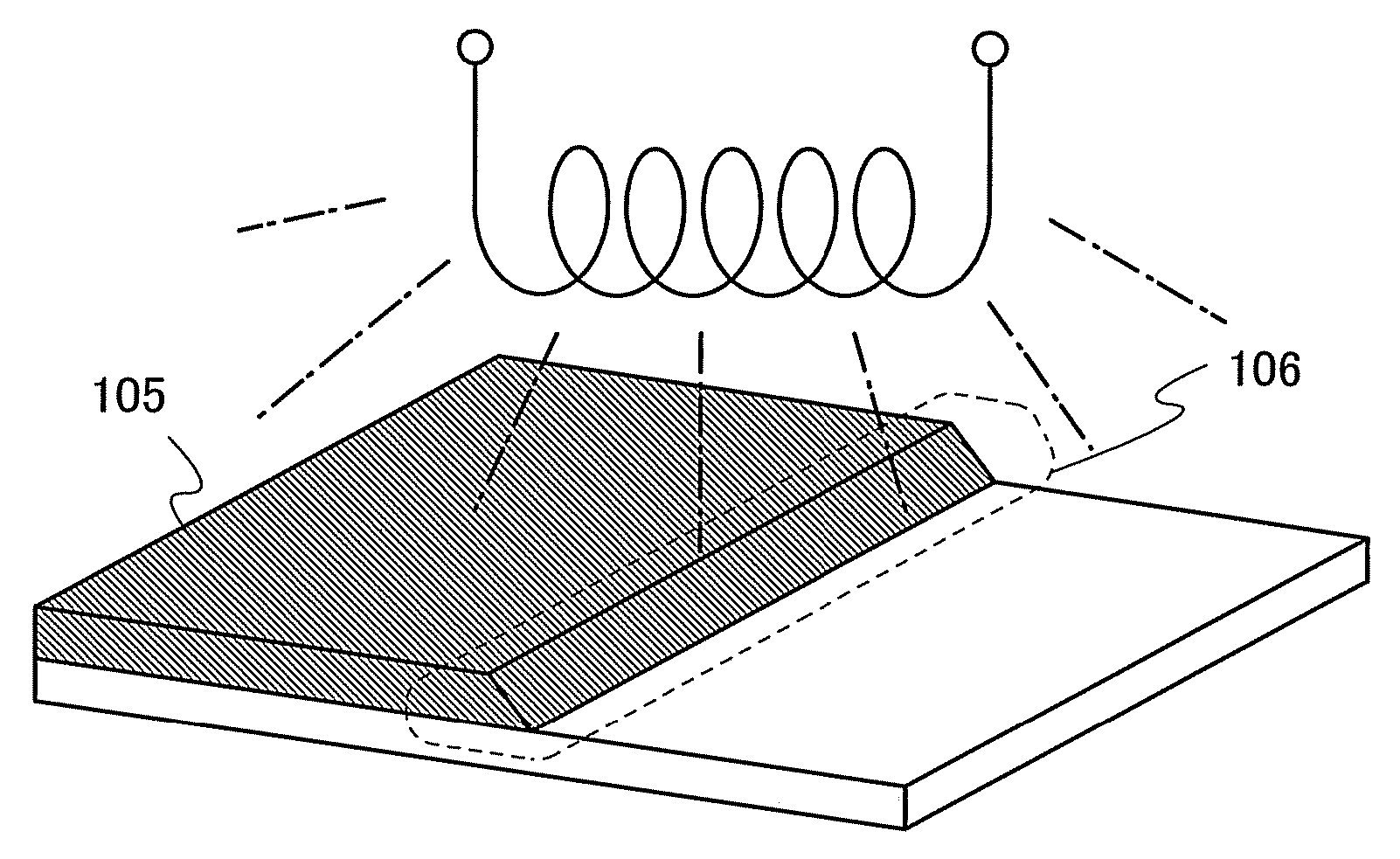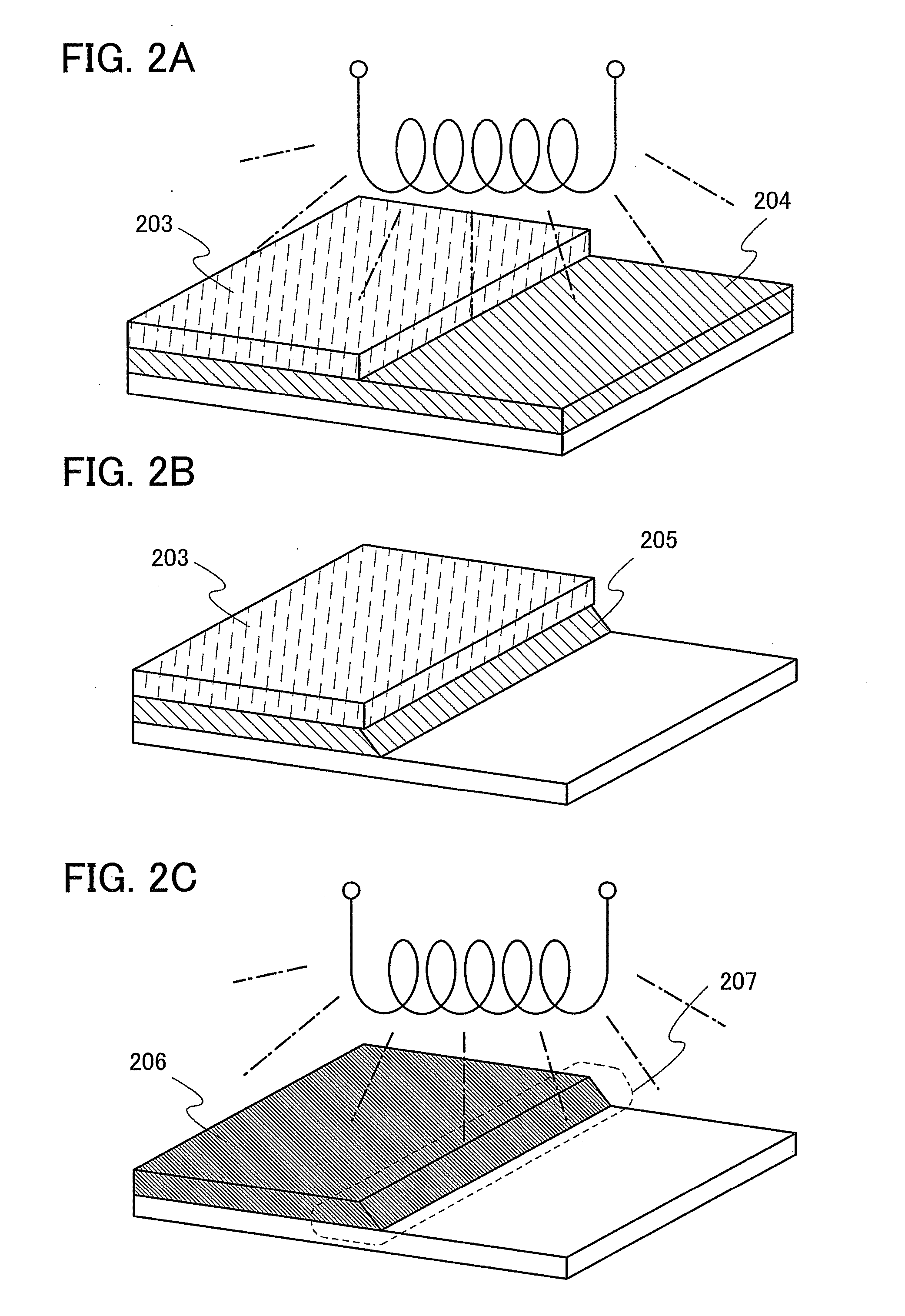Method for Manufacturing Insulating Film and Method for Manufacturing Semiconductor Device
- Summary
- Abstract
- Description
- Claims
- Application Information
AI Technical Summary
Benefits of technology
Problems solved by technology
Method used
Image
Examples
embodiment mode 1
[0042]In this embodiment mode, a method for manufacturing an insulating film of the present invention in which a photolithography method is used is described using FIGS. 1A to 1C and 2A to 2C. First, as shown in FIG. 1A, a suspension in which a siloxane resin or a siloxane-based material which is a precursor of a siloxane resin is dispersed is applied over a substrate 200, to form a thin film 201. Siloxane resin is a material in which a skeleton structure is constructed by the bond of silicon (Si) and oxygen (O). As a substituent, at least one kind selected from fluorine, a fluoro group, an organic group (e.g., an alkyl group or an aromatic hydrocarbon) may be used in addition to hydrogen.
[0043]A solvent of the suspension is preferably an organic solvent into which a siloxane resin or a siloxane-based material can be dispersed; for example, propylene glycol monomethyl ether acetate (PGMEA), 3-methoxy-3-methyl-1-butanol (MMB), N-methyl-2-pyrrolidone (NMP), or the like can be used. In...
embodiment mode 2
[0070]In this embodiment mode, a method for manufacturing an insulating film of the present invention is described using FIGS. 3A to 3C and 4A to 4C. First, as shown in FIG. 3A, similarly to Embodiment Mode 1, a suspension in which a siloxane resin or a siloxane-based material which is a precursor of a siloxane resin is dispersed is applied over a substrate 100, to form a thin film 101. Siloxane resin is a material in which a skeleton structure is constructed by the bond of silicon (Si) and oxygen (O). As a substituent, at least one kind selected from fluorine, a fluoro group, an organic group (e.g., an alkyl group or an aromatic hydrocarbon) may be used other than hydrogen.
[0071]A solvent of the suspension is preferably an organic solvent into which a siloxane resin or a siloxane-based material can be dispersed; for example, propylene glycol monomethyl ether acetate (PGMEA), 3-methoxy-3-methyl-1-butanol (MMB), N-methyl-2-pyrrolidone (NMP), or the like can be used. In this embodimen...
embodiment mode 3
[0085]Next, a specific method for manufacturing a semiconductor device of the present invention is described. Note that the case where a light-emitting element and a transistor are manufactured over the same substrate is given as an example for description in this embodiment mode.
[0086]First, as shown in FIG. 5A, an insulating film 301 is formed over a substrate 300. As the substrate 300, for example, a glass substrate made of barium-borosilicate glass or alumino-borosilicate glass, a quartz substrate, a ceramic substrate, or the like can be used. Further, a metal substrate such as a stainless-steel substrate or a substrate in which an insulating film is formed on the surface of a silicon substrate may be used as well. A substrate made of a synthetic resin having flexibility such as plastics which generally has the heat-resistance temperature which is lower than those of the above-described substrates can be used as long as it can withstand the process temperature in a manufacturing...
PUM
 Login to View More
Login to View More Abstract
Description
Claims
Application Information
 Login to View More
Login to View More - R&D Engineer
- R&D Manager
- IP Professional
- Industry Leading Data Capabilities
- Powerful AI technology
- Patent DNA Extraction
Browse by: Latest US Patents, China's latest patents, Technical Efficacy Thesaurus, Application Domain, Technology Topic, Popular Technical Reports.
© 2024 PatSnap. All rights reserved.Legal|Privacy policy|Modern Slavery Act Transparency Statement|Sitemap|About US| Contact US: help@patsnap.com










